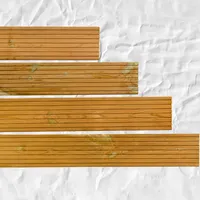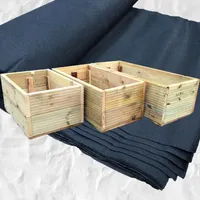How To Build Decking Board Planters
Simple way to utilise extra decking boards


Step 1: Plan Your Size & Cut the Boards
- First, decide how long and wide your planter will be. For example, let's aim for a 1000mm long by 500mm wide planter.
- Long Sides: Cut four boards to 1000mm.
- Short Sides: These will fit between the long sides. So, subtract the thickness of two long boards from your width: 500mm - 28mm - 28mm = 444mm. Cut four boards to 444mm.
- Corner Supports: Cut your sturdy wood into four pieces, each 276mm long.

Step 2: Assemble the Planter
This is where you build the box!
- Bottom Layer: Lay out two long boards parallel. Place one of the 444mm short boards between their ends to form a rectangle. Stand a 276mm corner support in each corner, flush with the board edges.
- Screw It Together: Drill pilot holes first to prevent splitting, then screw the long and short boards into the corner supports. Use your spirit level to make sure everything's straight and your tape measure to check the diagonals are equal (this means it's square!).
- Top Layer: Place the remaining long and short boards directly on top of the first layer, lining them up perfectly. Screw these top boards into the same corner supports, making sure your screws go into fresh wood.

Step 3: Line & Protect Your Planter
This step ensures drainage and helps your planter last.
- No Solid Bottom: It's best not to add a solid wood bottom. This allows for excellent drainage.
- Add Liner: Line the inside of your planter with the weed membrane or thick plastic. Staple it to the top edges of the decking boards, leaving a little slack in the corners for the soil's weight. Poke a few small holes in the very bottom of the liner for drainage. You can also add a layer of gravel inside the liner for even better drainage.
- Treat the Wood: Crucially, treat all the cut ends of your decking boards with an outdoor wood preserver or sealant. These spots are most likely to rot. Consider giving the whole planter a coat of decking oil, stain, or outdoor paint to protect it further and make it look great.
Important Note for Food Plants:
- If you plan to grow food crops (like vegetables or herbs) in your planter, it's generally best to avoid direct contact between the soil and chemically treated wood. While modern treatments are often considered safer, it's wise to use untreated wood for food-growing planters, or ensure your heavy-duty liner completely separates the soil from any treated timber. Decking boards in the UK are typically treated for outdoor use, so be mindful of this if you're growing edibles.